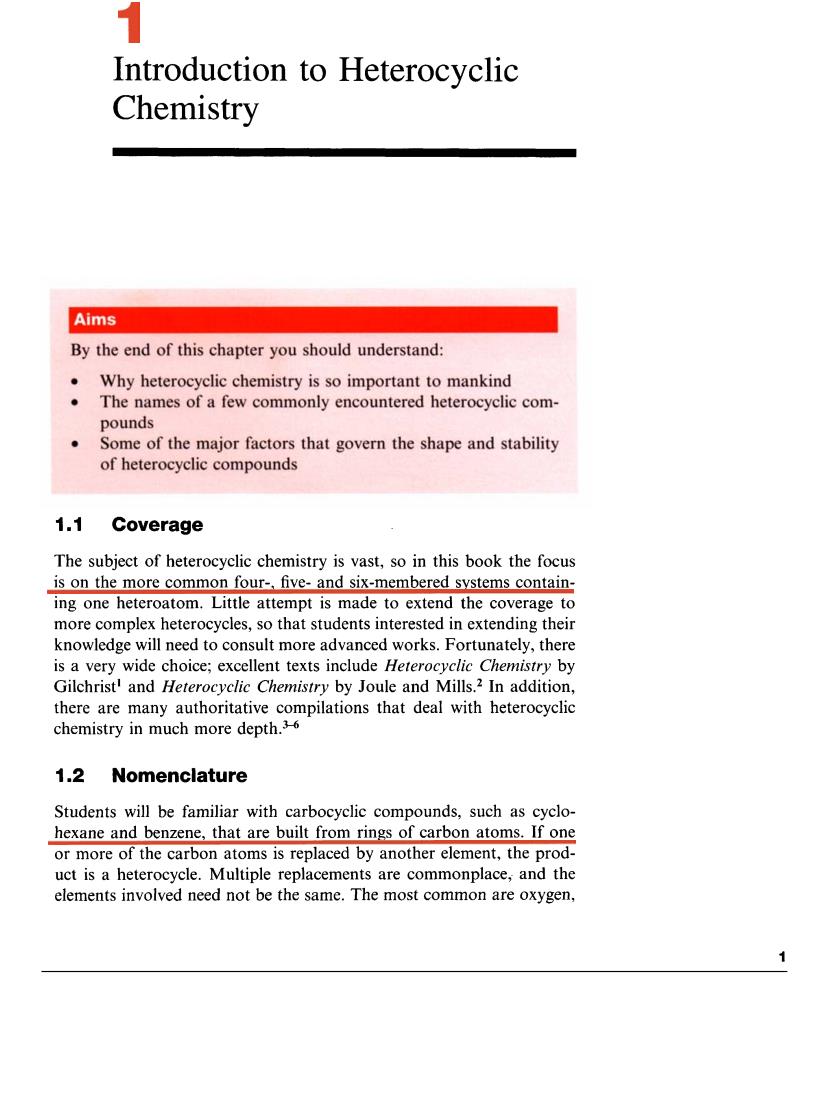正在加载图片...

1 Introduction to Heterocyclic Chemistry Aims By the end of this chapter you should understand: Why heterocyclic chemistry is so important to mankind The names of a few commonly encountered heterocyclic com- pounds Some of the major factors that govern the shape and stability of heterocyclic compounds 1.1 Coverage The subject of heterocyclic chemistry is vast,so in this book the focus is on the more common four-,five-and six-membered systems contain- ing one heteroatom.Little attempt is made to extend the coverage to knowledge will need to consult more advanced works.Fortunately,there is a very wide choice;excellent texts include Heterocyclic Chemistry by Gilchrist'and Heterocyclic Chemistry by Joule and Mills.2 In addition, there are many authoritative mplaions that dealhery 1.2 Nomenclature Students will be familiar with carbocyclic compounds,such as cyclo hexane and benzene,that are built from rings of carbon atoms.If one or more of the carbon atoms is replaced by another element,the prod- uct is a heterocycle.Multiple replacements are commonplace,and the elements involved need not be the same.The most common are oxygen.I Introduction to Heterocyclic Chemistry 1.1 Coverage The subject of heterocyclic chemistry is vast, so in this book the focus is on the more common four-, five- and six-membered systems containing one heteroatom. Little attempt is made to extend the coverage to more complex heterocycles, so that students interested in extending their knowledge will need to consult more advanced works. Fortunately, there is a very wide choice; excellent texts include Heterocyclic Chemistry by Gilchrist' and Heterocyclic Chemistry by Joule and Mills.2 In addition, there are many authoritative compilations that deal with heterocyclic chemistry in much more depth? I .2 Nomenclature ~~ ~~ Students will be familiar with carbocyclic compounds, such as cyclohexane and benzene, that are built from rings of carbon atoms. If one or more of the carbon atoms is replaced by another element, the product is a heterocycle. Multiple replacements are commonplace, and the elements involved need not be the same. The most common are oxygen, I